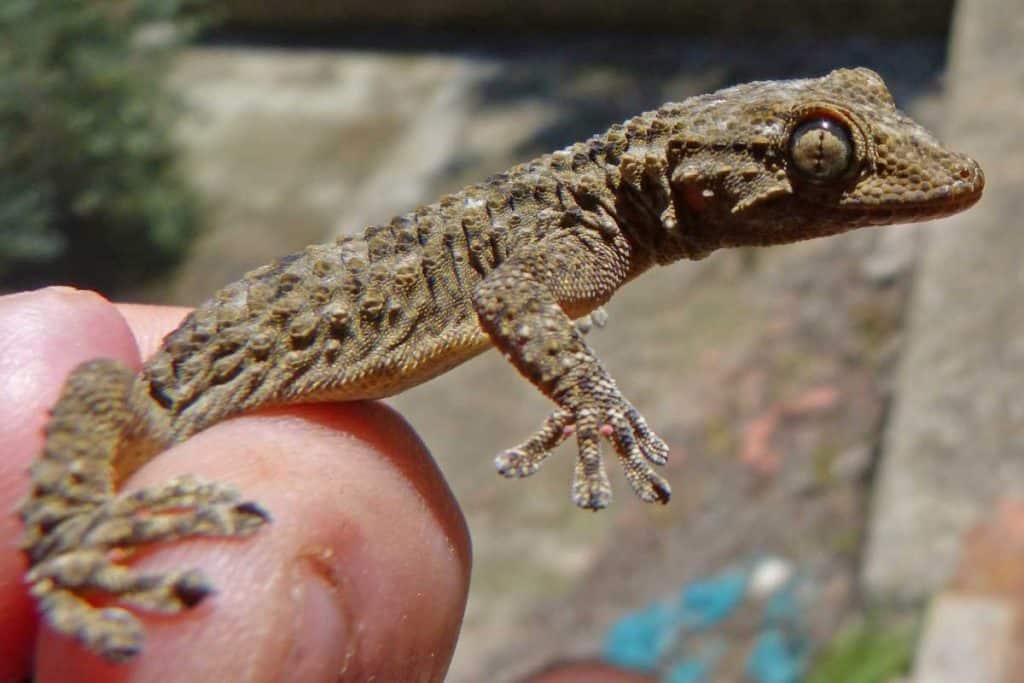
Part of the joy of owning a lizard is being able to interact and play with it. But how do you know which lizards like to be handled? And what’s the best way to handle them?
Handling can be stressful for a lizard, and some lizards even drop their tails when they are stressed or frightened. Other lizards will scratch and bite if they feel threatened, even if they have a very docile nature.
We have selected eight lizards that like to be held and some top handling tips to ensure your lizard stays happy and healthy – perfect for first-time reptile owners and experienced reptile lovers alike!
Good Lizard Handling Practices
Humans carry bacteria and parasites on their hands that can be toxic to reptiles. We are also much larger than lizards and can unintentionally handle them too roughly or even drop them.
Lizards, on the other hand, have sharp claws and teeth that can cause serious damage to humans if they are frightened or stressed.
These are just a few reasons why it is always good to ensure you are handling your pet lizard with proper care.
Read on to learn more about what you should keep in mind when handling your scaly pet lizards.
Location: Where to Handle Your Lizard
Your lizard is used to its enclosure. This space feels safe and secure for them. They are familiar with these surroundings and their view of the room.
Handling your lizard in the room where their enclosure is will be less stressful for them than moving them into a completely new environment which they are not familiar with.
Avoid any locations where there could be natural threats to your lizard such as birds, cats, and dogs, as this adds stress to the situation, and your lizard can react negatively.
You should also always avoid handling your lizard in any location where there is a lot of noise and fast movements, such as a party or out in public.
Too much noise or stimulation can cause even the most docile reptiles to become aggressive or fearful which can lead to biting, hissing or even tail-dropping in some lizard species.
Proper Hygiene
Reptiles are very sensitive to bacteria and parasites that we pick up on our hands, so make sure you wash your hands thoroughly before handling your lizard.
Extra special precautions should be taken if you are handling different reptiles one after the other. Mites and other parasites are easily transferable between reptiles and their enclosures. Always be sure to wash your hands thoroughly between handling sessions.
If a pet reptile has defecated on your clothing or hands and you plan on handling another lizard, then you must change your clothes and wash your hands thoroughly. Bacteria and parasites are present in fecal matter and can cause harm to your lizard.
Reptiles are very sensitive to bacteria and parasites that we pick up on our hands. Make sure to wash your hands thoroughly before handling your lizard.
How to Pick Up Your Lizard
In the wild, predators will typically snatch up a lizard from above so avoid picking up your lizard in this way as it can stress them out.
Whatever you do, don’t pick them up by the tail – this can be really painful for them. Your lizard will likely either turn and bite you or run away.
Some lizards can drop their tails as a decoy to predators, and not all lizards can grow them back, such as blue-tongued skinks.
Follow these simple steps to pick up your lizard safely:
- Approach your lizard very slowly from the side rather than from above.
- Always make sure your lizard knows you are there and has become comfortable with your presence.
- When you pick up your lizard, make sure they have seen your hand and scoop them up from underneath their bodies.
- Be sure to fully support their body and tail whenever you pick them up, this is particularly important for larger lizards.
If you are gentle and avoid roughly handling their tails, the handling process should go well for both you and your lizard.
How to Hold Your Lizard
Lizards like to be held in a gentle and secure manner, just like all animals. It’s important to properly support their whole body and avoid making any sudden movements in case you scare them.
How to Put Your Lizard Back
There are three main reasons why you would need to put your lizard back in its enclosure:
- The first one, and hopefully the one that happens most often, is that you have finished handling your pet lizard and are ready to put it back in its enclosure.
- The second is that your lizard has been out of its enclosure for too long and is losing its body heat rapidly. Remember, lizards are ectothermic, so they need external heat to regulate their body temperature and metabolic functions.
- The third possible reason you might put your lizard back in their enclosure is that your lizard is stressed or acting aggressively. If this is the case, you risk a nasty bite if you continue to hold it. If your lizard starts making erratic movements or you notice darkening of the skin, puffing out of skin flaps, or hissing, then it’s time to take them home!
Whatever you do, do not just toss your lizard back in its enclosure! This can hurt it and promote an aggressive or stressed response.
Gently lower your lizard back into its enclosure and place it near its basking spot or its favorite hide. Remove your hand slowly so you do not startle or stress out your lizard.
Top Lizards for Handling
Now that you have a better idea of how to properly handle your lizard, take a look at our top eight friendly lizards that enjoy being held.
These lizards come in different shapes and sizes but they are all great for handling, it just comes down to your personal preferences as a reptile owner.
These pet lizards are particularly good for first-time owners who are still learning about reptile keeping.
1. Argentine Black and White Tegu
Size
These popular reptiles are very large and heavy, which means picking them up and handling them is a two-handed (and two-armed) job! When handling your tegu, make sure you support their body properly.
The Tegu is the largest lizard in our list but we’ve included them because of their wonderful personalities which make them very popular lizard pets.
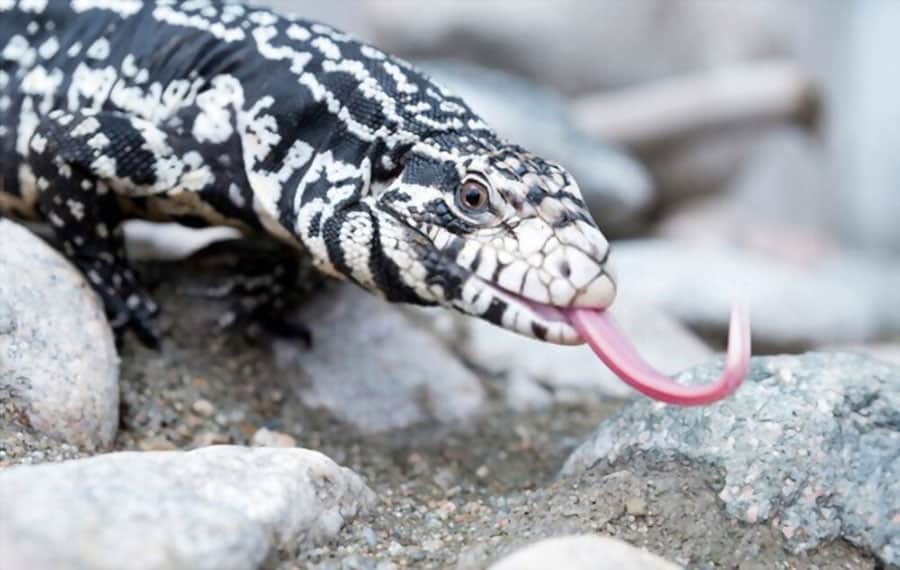
Temperament
Tegus are highly intelligent and can be very friendly and docile if socialized properly from a young age. Many owners say that they have a similar personality to dogs; they like to be cuddled and will happily walk around the house, provided there are no other pets around.
If you don’t handle and socialise your tegu from a young age, it may become aggressive as an adult. Make sure you are committed to frequent and consistent handling if you want a well- behaved tegu.
2. Bearded Dragons
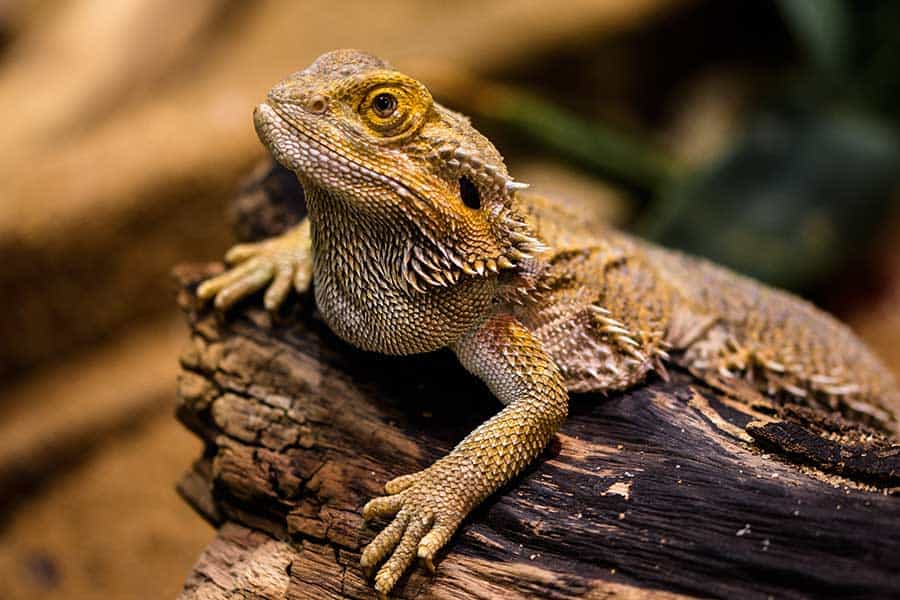
Size
Bearded dragons typically grow to around 18 to 24 inches in length.
Beardies are great beginner lizards thanks to their size and laid-back personality. They will often walk onto your hand and will not need to be picked up at all.
Temperament
Bearded dragons are perfect lizards to handle as they are very docile and friendly. They genuinely enjoy being handled and will gladly sit with their owners for hours at a time.
Bearded dragons are good lizards to have if you have children and want to get them used to looking after a pet. They are not particularly large and intimidating or heavy enough to be accidentally dropped.
This popular species is also hardy and not too small that children will easily squash them. Make sure you supervise any child that is handling your lizard.
Check out our best pet lizards for kids.
3. Blue Tongue Skink
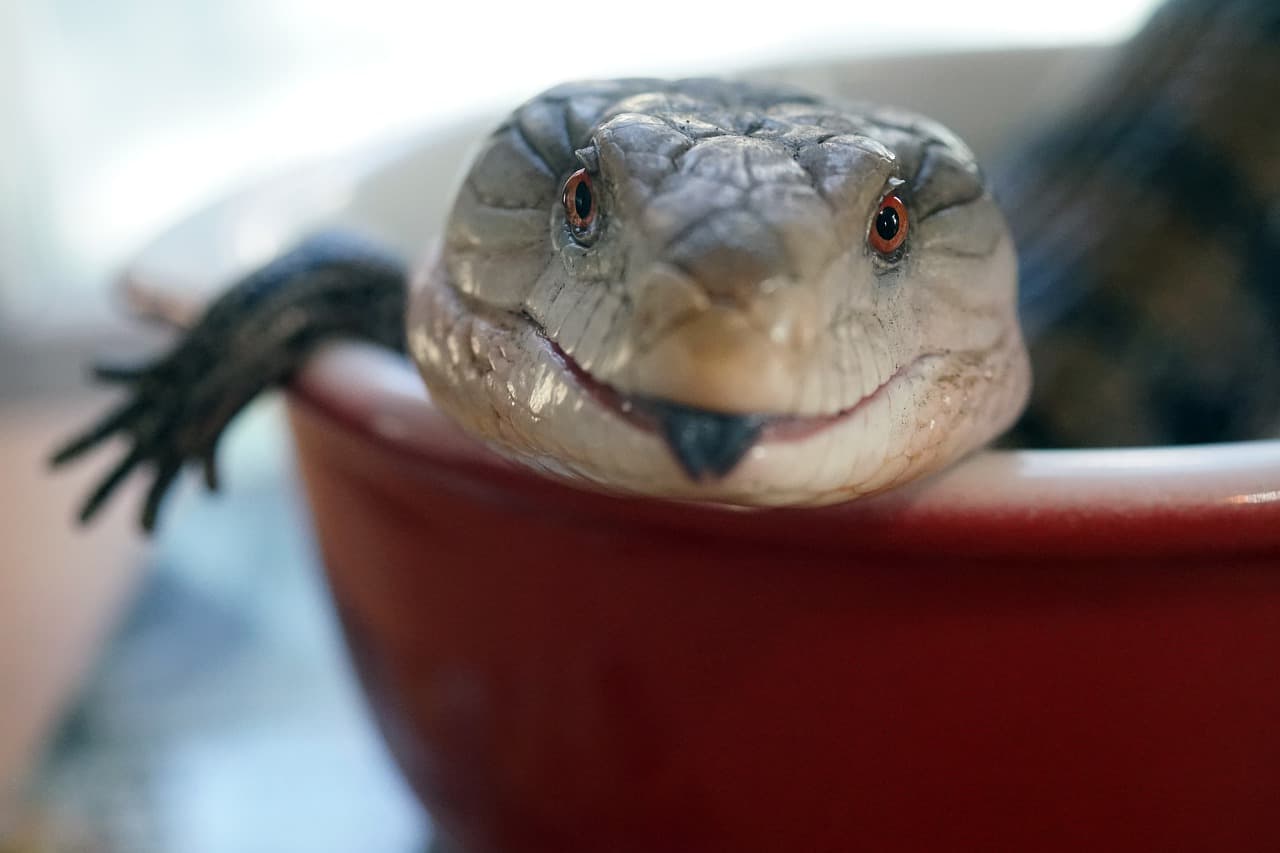
Size
Blue tongue skinks grow to anywhere from 14 to 18 inches in length.
While they are slightly smaller than bearded dragons in length, blue tongues are very heavy lizards for their size. This means that their bodies need to be carefully and gently supported at all times.
Whereas a bearded dragon is light enough to hang onto the front of your shirt or sit on your shoulder while you walk around, a blue tongue skink is much heavier and bulkier.
Due to their weight and size, they are fairly hardy lizards and are generally easy to handle.
Temperament
Blue tongue skinks are docile lizards that are known to enjoy a good handling session if properly socialized from a young age. They can be quite active and will move around on you a lot while you handle them.
If they are tired or are enjoying your body heat, they may lay their body along your forearm for a quick nap.
4. Ackie Monitor
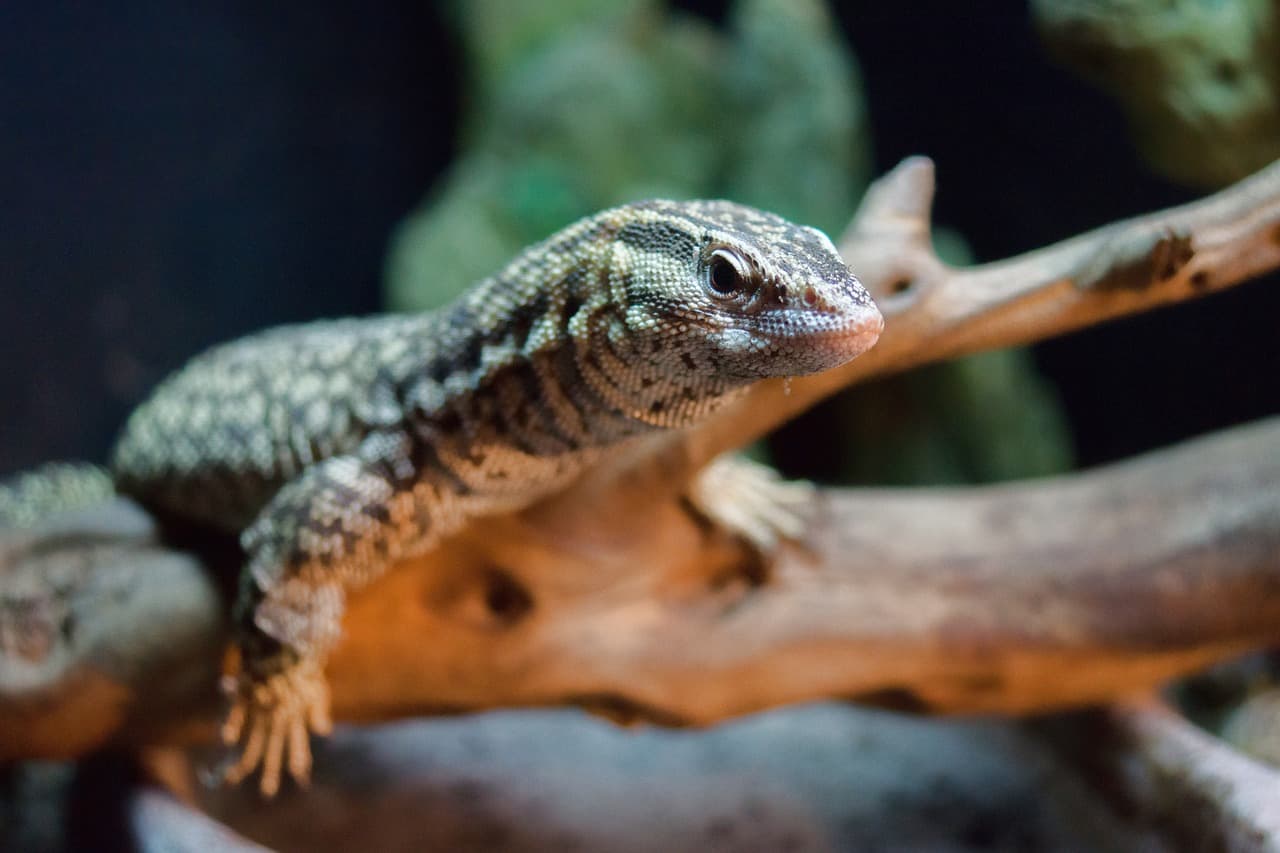
Size
Ackie monitors grow to around 27 inches in length.
The Yellow ackie monitor is more popular than the Red ackie monitor, though it is a little smaller. Both the yellow and red ackie monitors are great for handling.
While they look like their larger savannah monitor or komodo dragon cousins, they lack the strength, size, and bulk of those lizards, which makes them very popular.
Temperament
Ackie monitors are skittish when young but become more docile as adults.
As juveniles, Ackies can have a nervous personality and be averse to being handled at first. However, if you have patience and commit to consistent and gentle handling, you can gradually tame your Ackie monitor easily to the point where they come to you to be handled.
Simply place your hand into their enclosure slowly and steadily, approach them from the side, and allow them to crawl right onto you. Handling them helps keep them mentally stimulated and healthy.
5. Chinese Water Dragon
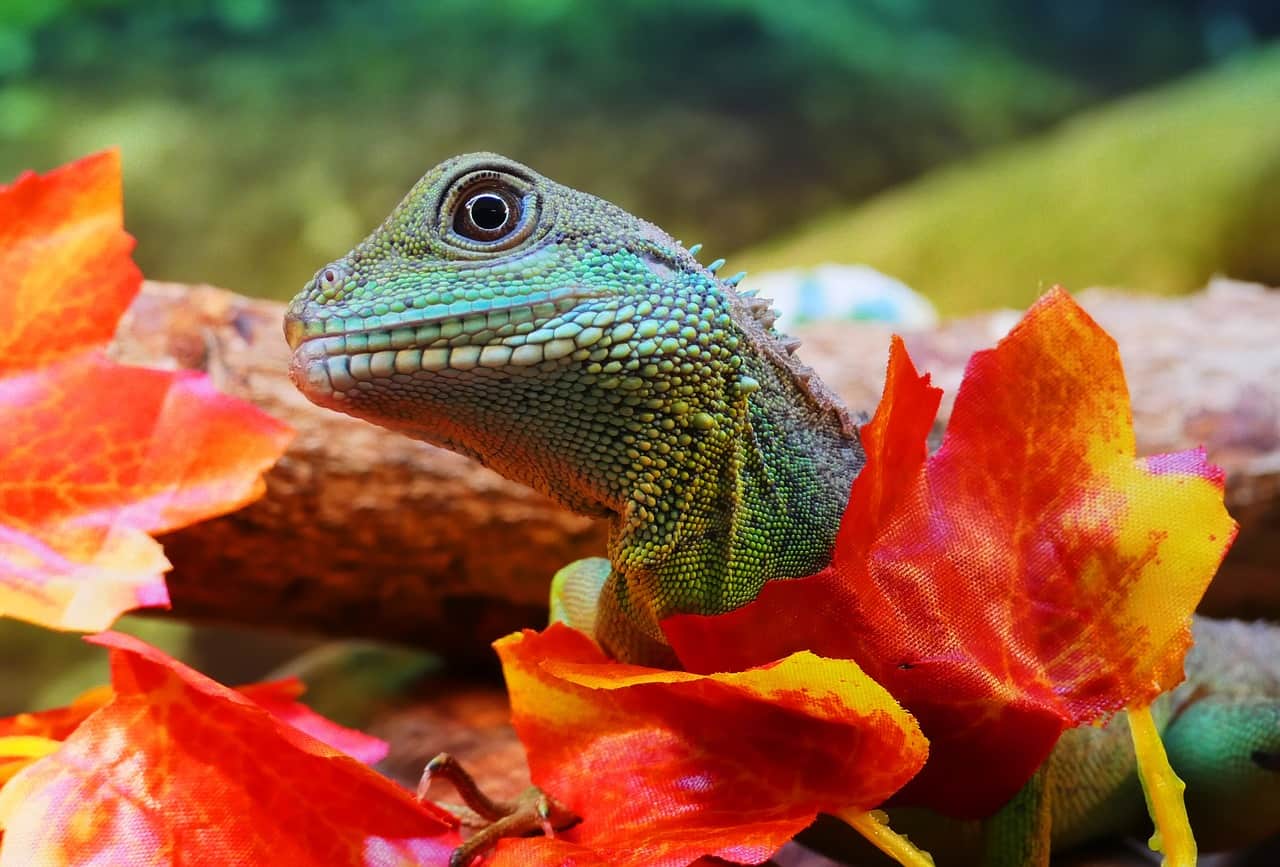
Size
Chinese water dragons generally grow to around two to three feet in length, though most of this length is from their long, thin tails.
They are beautiful lizards and a really good size to be handled. These long-tailed lizards are slightly smaller than a green iguana, which makes them a good option if you have a limited amount of space to house them.
Temperament
Chinese water dragons are easily tamed and are very intelligent. They recognize their owners and can form genuine bonds with them. They are very friendly and almost never bite when handled properly.
The only drawback about this lizard is that they have advanced care requirements which can quickly become pricey.
These lizards will happily chill on your arm or shoulder and keep you company while you do your thing.
6. African Fat-Tailed Gecko
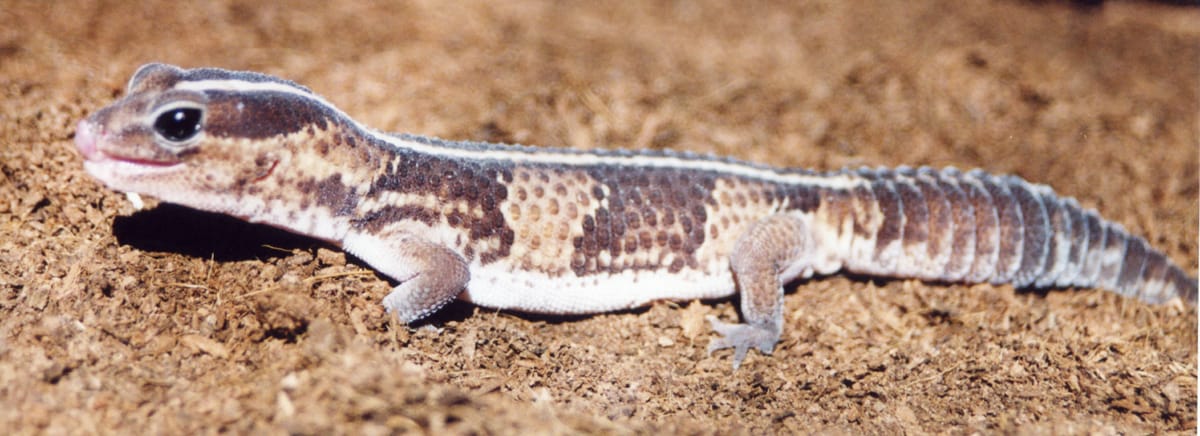
Size
African fat-tailed geckos grow to approximately nine inches in length.
The African fat-tailed gecko is similar in size and shape to the more common leopard gecko, though its head and feet are a bit larger. They are on the smaller side for handling but will fit in your hand comfortably.
Temperament
African fat-tailed geckos are the epitome of chill. They are docile, adorable, and take to handling extremely well. Geckos are more than happy to sit with you and simply explore your hands.
They are not as well known as the leopard gecko or the crested gecko because they are not as common.
7. Green Iguana
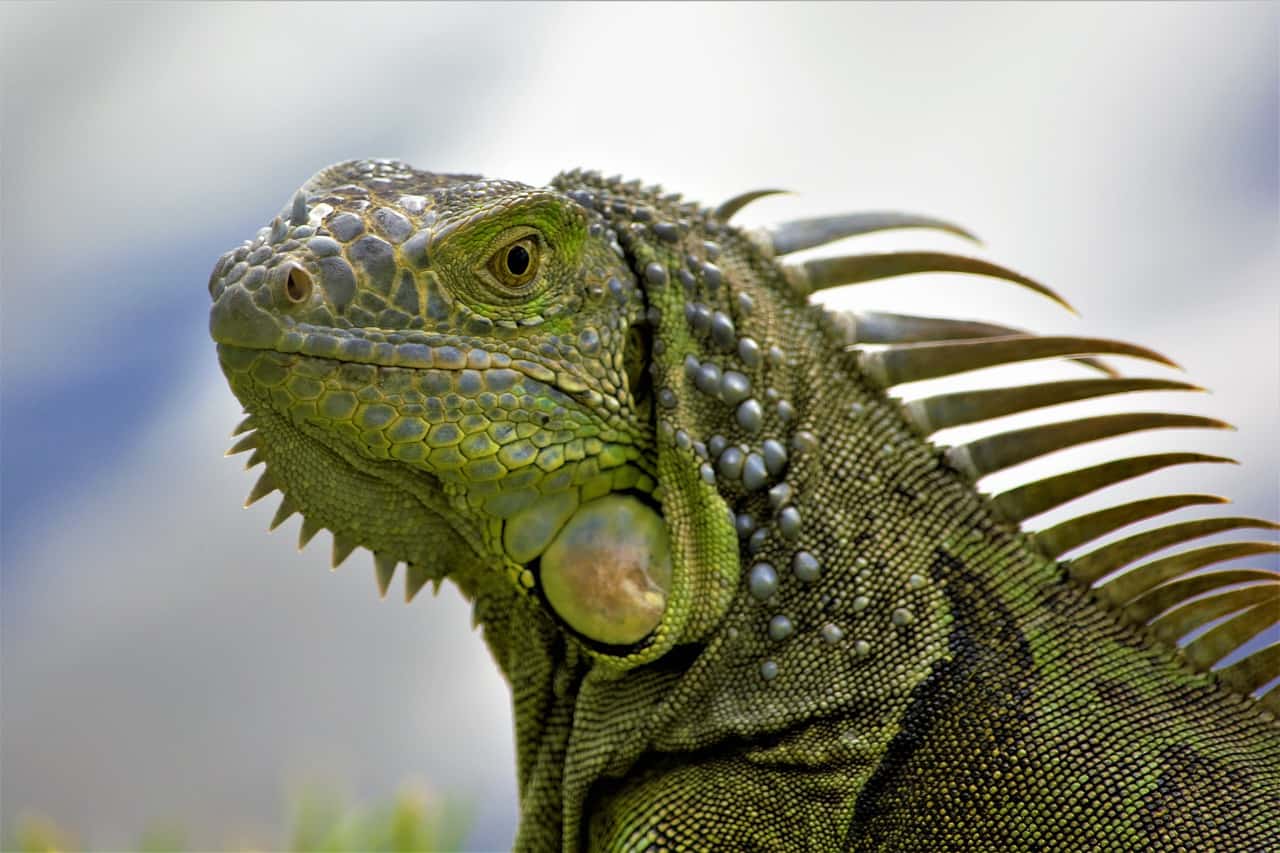
Size
Green iguanas can grow up to six feet in length from head to tail tip.
Adult green iguanas are big lizards with big teeth and claws, so it is easy to assume they are aggressive, dangerous animals. However, they start quite small and delicate.
If properly socialized from a young age, a green iguana can grow up to have a very friendly personality.
Temperament
Your green iguana will have its own personality, and temperaments vary from lizard to lizard. They can be very relaxed or very feisty animals, but with a patient owner who is willing to socialize them, they will gradually become more tame and affectionate.
These beautiful lizards make it onto our list because when they are tamed and trained properly they are wonderful to handle and highly intelligent.
It is essential to get to know your green iggy’s body language. This will tell you when it has had enough handling or when it does not feel like being handled at all. They are very expressive and never bite without a reason.
If you are looking for a big lizard that does well with handling, bonds with their owner, and is a strict herbivore, then the green iguana is for you.
8. Leopard Gecko
Size
Leopard geckos grow to around 10 to 12 inches in length.
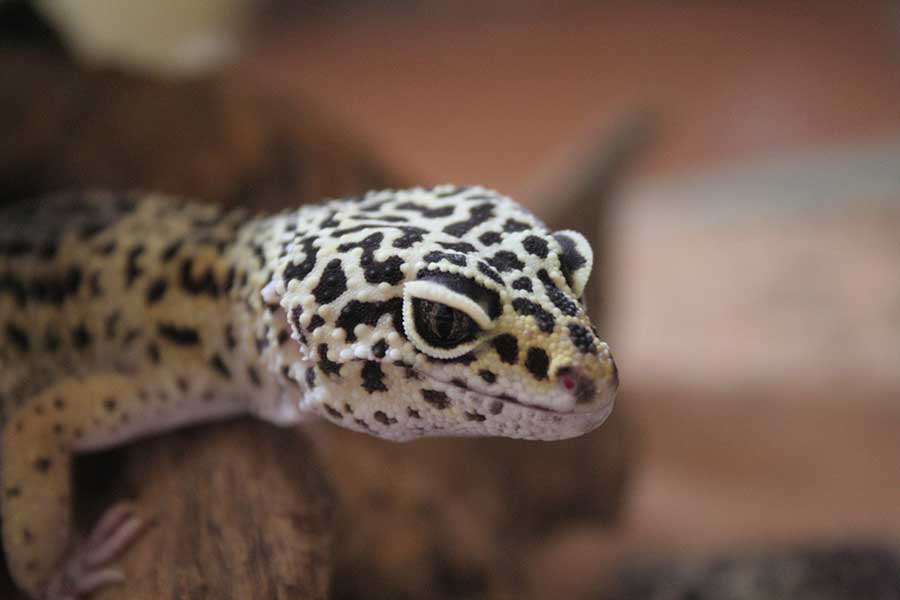
If we had to pick a number one lizard for handling, care, and cuteness all rolled into one stunning chirpy lizard it would be a pet leopard gecko.
This lizard is small enough to comfortably fit in your hand but large enough that you feel secure holding them. That’s why geckos are often considered one of the best reptile pets for handling.
Temperament
Leopard geckos are loving and curious lizards. They enjoy being handled and will often show this with lots of adorable chirps and barks. They will happily walk over your hands and up your arms and keep you entertained for their whole lives.
The only drawback to keep in mind is they can drop their tails if they are startled or if they feel their tail being pulled on. Thankfully, if your gecko drops its tail, it will slowly grow back.
Training and Taming Your Lizard
All lizards can be aggressive and nervous if they get scared or uncomfortable. Most lizards can be tamed up to the point of tolerating and even enjoying frequent handling, though some lizards are more easily socialized than others.
If you want to have a lizard that enjoys being handled often, then you will need to be consistent with your training and taming. Lizards that like to be handled are often reptiles that have become accustomed to human interaction from an early age.
Once you have put your new lizard in their enclosure, let them rest for a couple of days to get used to their habitat and surroundings. Once they have settled in, you can start this familiarization and socialization process:
- Carefully put your hand in their enclosure and let them approach you. Do this once a day for a couple of days. Avoid picking them up just yet.
- Once they are used to your presence, you can move on to gently scooping them up and holding them inside their enclosure.
- Always scoop from underneath the lizard and approach them from the side rather than from above. Never pick them up from above or by their tails.
- Handle them for short periods to get them used to you and the experience.
- Slowly increase the amount of time your lizard spends out of their enclosure.
- Always watch for signs of distress and aggression and gently return them to the enclosure if you think they could be unhappy.
If you’re willing to put in the time and effort consistently, most lizard pets will become used to and eventually even enjoy being handled!
FAQS on Handling Lizards
Do all lizards like to be handled?
No, they do not. Certain types of lizards can become very stressed when they are handled and do better when they are left alone in their tank and kept as display lizards. For some species, no amount of socialization will make them enjoy being handled.
Why do lizards drop their tails?
Autotomy is the process where a lizard will ‘drop’ or self-sever its tail as a decoy to distract predators. The predator has a nice juicy tail to eat, and the lizard can get away and live another day.
Will my lizard grow its tail back if it drops it?
Not all lizards grow their tails back. For example, African fat-tailed lizards and leopard geckos do grow their tails back, but green iguanas will not regrow theirs. A regrown tail will not look the same as the original and will often be shorter and smaller.
My lizard won’t stop biting me; what can I do?
If your lizard is aggressive and tend to bite you no matter what you do, there are a few potential reasons for this behavior:
- Your lizard may be going through puberty. Green iguanas can become very aggressive around puberty (two to three years old) and may bite if they are being handled roughly.
- Your lizard’s enclosure may have something wrong with its temperature or humidity settings. Make sure you use a quality hygrometer and thermostat to regulate the humidity and temperature. If they are uncomfortable in their enclosure, they can become stressed and aggressive.
- Your lizard may be in their mating season and be stressed or aggressive due to hormones.
- Your lizard may be about to enter brumation.
- You may be handling them incorrectly, and they are trying to tell you that you are scaring or hurting them.
I am scared of my lizard biting or scratching me, but I still want to handle it. What can I do?
You can wear some reptile handling gloves to handle them until you are ready to handle them with your bare hands. Make sure you wash your gloves after every time you handle your lizard.
Handing Off to You
Handling provides bonding time and is mentally and physically stimulating for your lizard which keeps them healthy and happy.
If you follow these simple handling tips, then you can enjoy a fun, enriching, and exciting activity for both you and your lizard.



